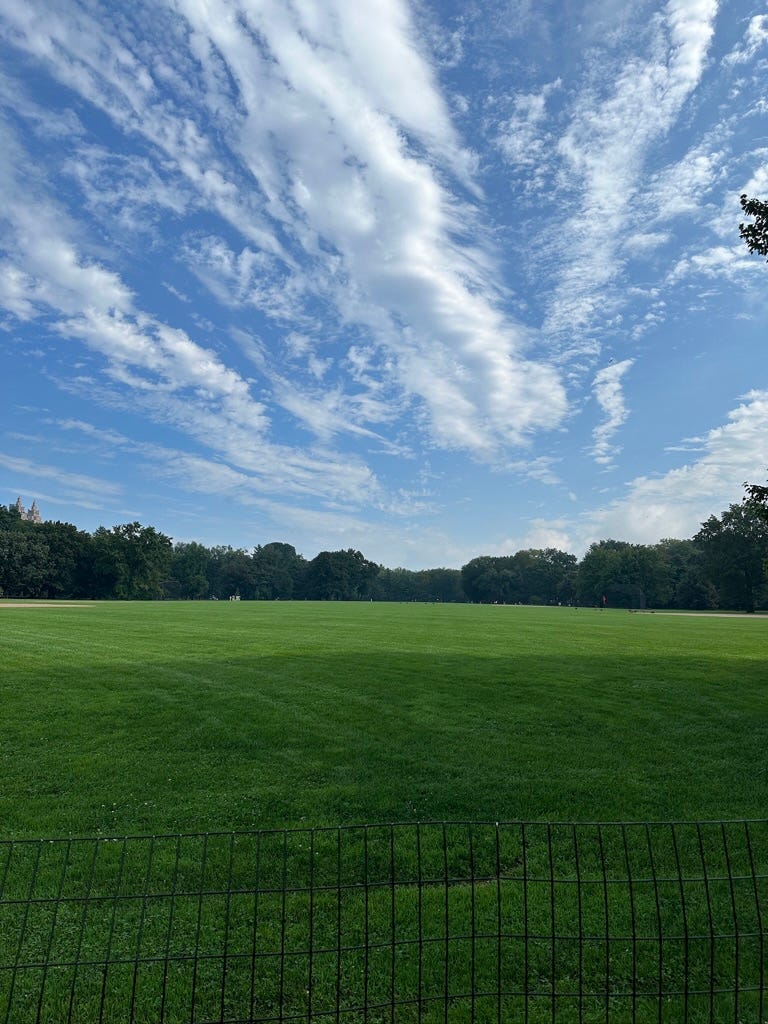Teachers
This is Western Coffee—notes on building the creative body. Last time: Feast. The whole series is here. Please share this email; you can sign up free below.
I’ve been thinking about two subsets of teachers: the sculptor and the atmospherist.
The sculptor, if you will indulge my scheme, is the person who introduces and enforces constraints, giving shape to the student’s work. My first big threshold as a writer was Mrs. Zuhl’s AP English class. We had to hand-write an essay in the style of the Advanced Placement exam every single week; I would sometimes do mine during calculus, the period before, where my attention was up for grabs anyway. Mrs. Zuhl’s favorite question—asked in class or inscribed undeferently over a paragraph by her grader—was “So what?” If you couldn’t answer that question—about a sentence, a paragraph, an observation—it had to go. (Mrs. Zuhl also basically forbade em dashes and semicolons, a stricture that obviously hasn’t stuck. But, and I understand you may have some quarrel with this, “So what?” is ever on my mind.)
The atmospherist, in pure form, does almost the opposite: He may be generally resistant to rules himself and wish to create a space where they interfere with the student’s activity as little as possible. Tom, the photography teacher, whose practice of going by his first name was unorthodox in my Utah public high school in the ’90s, was one of these. He taught us how to choose film ISO and aperture and shutter speed and so on, and we learned how to develop negatives and prints; but these were just means to an end. As soon as possible he wanted us out shooting, or in the dark room, tweaking process. When I think about Tom, a vinyl jazz record plays in my mind, and I mean that in a good way.
These days I encounter the sculptor in Ester, my swim coach, who scribbles out a dizzying roster of drills at the start of each class and then begins her student-by-student rotation of scrutiny. “Your stroke is looking so much better,” she will say, brightly, and you sidle up to the edge of the pool to find out which part of it is not looking so much better, though. Nick the yoga teacher inhabits this vein as well, forgoing the usual vigorous athletic flow of an Equinox class for a seminar in adding five or six significant digits to your setting for precision. (It must be said that Nick’s class has an incredible atmosphere, warm and taut, but it seems to emerge from the teaching and not from a separate effort beside it.)
In cycling class, David does some sculpting—leading us through ranges of effort and speed and posture—but is sparing as a commentator, and much heavier on atmosphere. Perhaps counterintuitively, the result is often the most intense athletic test of my whole week. The mood in the room seems to reel in committed, habitual, very competitive athletes; into the space he has dedicated for this purpose, we bring whatever we’ve got. This effect frays a bit if a substitute instructor, for example, comes in with a mind to be more overtly a coach. A key ingredient of the atmospherist’s draw is room for self-determination.
So what? Part of the reason this is on my mind is that I recently finished my teaching certification in yoga. I’m not sure when or how I will teach, but even informing my approach to those questions is that I suspect myself to be an atmospherist. (It’s subject-specific, though. Anyone I’ve edited can tell you this would not be the case if I were teaching writing.) Which means I probably won’t start off on Zoom, and probably will want to find a space that is not just logistically adequate, one with a decent sound system or even a piano, and so on. Knowing this frames the project of starting to teach in a different way. It changes the priorities. It makes me feel like there’s something I can do that would be special, but there are no shortcuts. Teaching is more than teaching.
If you enjoy Western Coffee, please make a donation on my fundraising page for the nonprofit Achilles International, which is how I’m gaining entry to the New York City Marathon this year—my first. All donations go to the nonprofit and its work with disabled athletes; I’m paying my own race fees, etc.



